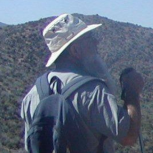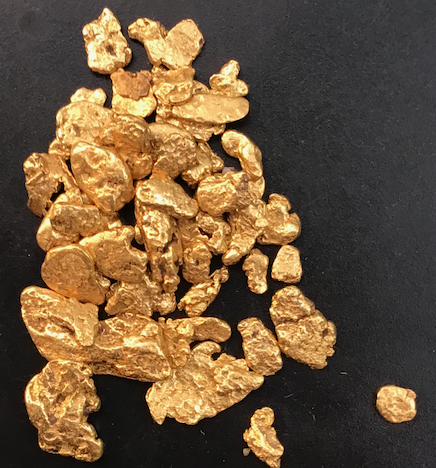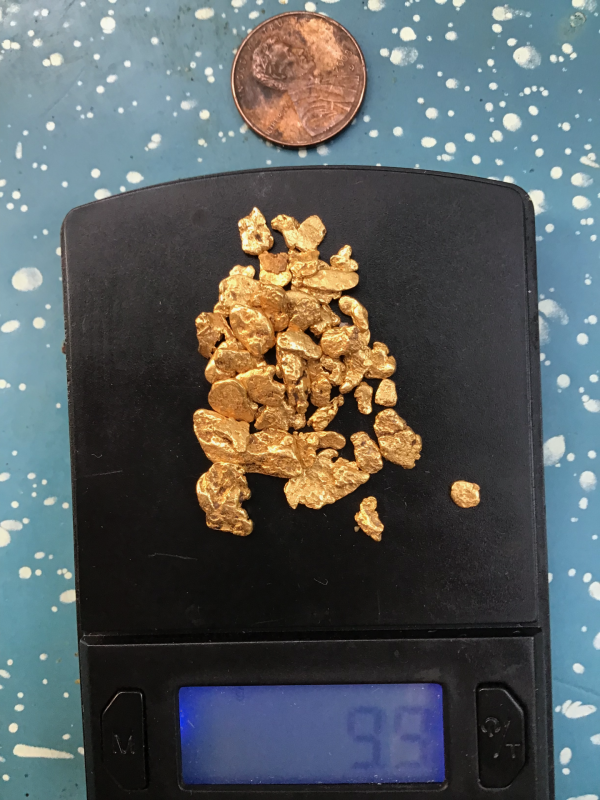-
Posts
132 -
Joined
-
Last visited
Content Type
Forums
Detector Prospector Home
Detector Database
Downloads
Everything posted by oldmancoyote1
-
I might write an iPhone app to filter noisy metal detector signals. Is this a big problem, or is the problem just my old GPX4500? The basic idea is to repeatedly swing across an area, and the app would add all the signals together. Random signals would cancel each other out, and a valid signal would be reinforced. The oil companies call it "stacking", and it has been extremely successful. Any other ideas for an app for nugget hunters would be very welcome.
-

Sun Ray Gold Pro Headphones And GPX 6000
oldmancoyote1 replied to billdean's topic in Minelab Metal Detectors
I have had similar problems in the past. In my case I was getting only one of the two stereo channels. Fiddling around with the 3.5 mm plug fixed the issue. -
There is coverage for the south eastern part of the Klamath Mountains, specifically coverage for the Carr-Hirsh-Delta... Fire areas.The lidar images from this web site are fantastic. Here is a satellite image for one area and the lidar image for the same area. The second image shows pocket gold pits that are otherwise invisible. The images are about 600 feet across. The scale info on these copies is not correct.
-

Question For Gerry On Discriminating VLF
oldmancoyote1 replied to Ryan's topic in Detector Prospector Forum
If you are not experience in VLF, experiment with a VLF in your intended area before you buy anything. You may be disappointed. If all the iron junk is small, VLF has potential, but larger iron junk (particularly rusted iron) can produce VINs in the gold range. This can produce trashy areas that are very frustrating to detect. -

Did This Have An Effect On Idaho Gold?
oldmancoyote1 replied to mn90403's topic in Detector Prospector Forum
There are things that can be said, but i must say that I have no specific knowledge of gold related to the paleo-lakes and the ensuing floods. It occurs to me that gold-bearing stream discharges from mountains ringing the lake would form deltas where they reached the shores. When the lake drained, much of this sediment would be eroded away. As these deltas would be at the edges of the lakes, they might escape catastrophic erosion and leave some gold behind. This is an exploration concept not a prediction. Sometimes exploration concepts are profitable. Often they are not. Without specific knowledge of discharge-related gold occurrences you'd probably do better ignoring the floods and seeking an exploration concept related to a known traditional gold occurrence. -

Detecting Large Gold Deposits At Depth
oldmancoyote1 replied to GhostMiner's topic in Detector Prospector Forum
Consider renting ground penetrating radar. You can get a simple system for about $100/day with a $100 prep fee (look on-line). Shipping and insurance are extra. There are useful videos on-line to help you understand and interpret it, but there would be a significant learning period before renting. You would also have to convince the rental agency that you are responsible. All in all this would require a significant effort to make this happen, but it is in the range of possibility for an amateur. -
I have only seen about 1/2 square feet of gold film. I think the odds are way too low. There isn't enough sulfide to yield much gold.
-
Locally, it's pyrite that usually forms an iron stain or lumps of iron oxides, but the situation is very complicated. Example: Some of the local pyrite contains a little gold. When the pyrite oxidizes, it forms an acid. If there is some manganese present and some salt (often the case in black shales), any gold may go into solution. The gold can then precipitate as very thin films on shale or as valuable spongey pocket gold. I don't really know how to judge which is the case without digging up the shale. After digging up a lot of oxidized pyrite without any visible gold, I have given up metal detecting the local black shale.
-
Sulfides are very common in shales. Oxidized sulfides often resemble gold when viewed with a metal detector.
-
If your metal detector does not find anything up hill, consider panning looking for gold of any size including dust-size.
-
Do check the slope up hill for a pocket gold deposit. There's lots of info on this on the web.
-
Can't tell from the photos. I think I see some cubic forms. If so, it may be pyrite. Crush a small piece. If it crushes to a powder, pyrite is most likely. If it deforms like lead, it's likely gold.
-

Vlf Smf And Pulse Induction
oldmancoyote1 replied to water spider's topic in Detector Prospector Forum
One sometimes useful way to anticipate tech advances is to look at the extreme high-end hardware and software packages for big money uses like military, shallow ground investigations for engineering, and maybe archeology and geology. I haven't looked at this stuff for several years, but the thing that did impress me was graphics especially map views and 3-D representation of the sub-surface. As hardware become cheaper and the software more sophisticated, some of this will come our way. -
-
Mary Hill wrote a booklet Hunting Diamonds in California. A geologist I met who specialized in conventional diamond geology said he searched the pit Hill mentioned and found no indication of diamonds. The diamonds found in California apparently are not from kimberlite pipes as found elsewhere. Looking for a pipe would not be a very promising approach. Your best chance would be exploring a pit using an ultraviolet light after dark. I should mention that rattlesnakes can fluoresce too.
-

Mineralogy Question From A Woodworker
oldmancoyote1 replied to Ron Swanson's topic in Detector Prospector Forum
Azurite(blue) and Malachite(green) are two rather soft copper minerals with stunningly pure bright colors. They are relatively common and not that expensive. You could moderate their intensity by mixing some white or black mineral powder. They tend to form acids when wet, so seal them well. Show a picture of your work as I do woodworking too. -

Steve: Can I Pick You Brain?
oldmancoyote1 replied to oldmancoyote1's topic in Detector Prospector Forum
Thanks -
You have had a lot of success over the years. I imagine you have found some wonderfully large masses of gold. Think about each of those for a few moments, especially those in the lower 48. Does anything appear as a common feature of their locations? Surely not everything would fit the same mold, but was there anything present frequent enough to indicate one location might be a little bit more likely to yield big gold than another? Thanks
-
That's similar to the area I reported on recently. It was placered by individuals until it was hydrauliced by a large company and then worked again in the 30's. There seems to be more gold left over from prior activities than I had imagined. I thought folks were much more thorough. There is a large bedrock exposure 5 minute walk from where I live during the summer that I thought was so public and so obvious that it was exhausted. Someone told me otherwise, and this week I have started finding flood gold and small nuggets.
-
At my rate, it'll take that long especially since the fires make my area largely inaccessible. Nice photo.
-
You are right. I dug 6 more holes. For 3 the bedrock went straight on down. Based on this tiny sample, I will follow two rules: 1) I won't dig unless the site is sort of hemmed in by bedrock on at lest two sides (it's probably too deep if it isn't); and 2) I won't dig unless there is evidence someone got gold within a couple of feet (I will miss some gold, but I won't fail as often.).
-
What was the site like? Those certainly aren't river rocks in the picture.
-
BF44: You misunderstand. Everyone on this forum knows about crevasing. Digging for hidden cracks and holes before metal detecting was a change in my preferred strategy. "New for me", get it?
-
After 3 years with a friend's DFX and 4 years with my own Makro Gold Racer, I finally found gold. Tried a new spot and a new technique. I found 63 pieces in 5 days and my buddy found 81 working right next to me with a Gold Monster. My little VLF can't compete with the big iron, so I needed a new method. I started digging where the bedrock went under the sand and gravel. Following the bedrock along, I noted a few small spots of cemented gravel in cracks and holes in the bedrock. Carefully excavating these gravel patches and detecting as I went let to a wonderful few days. Just detecting from the surface has proven to be a waste of my time.







